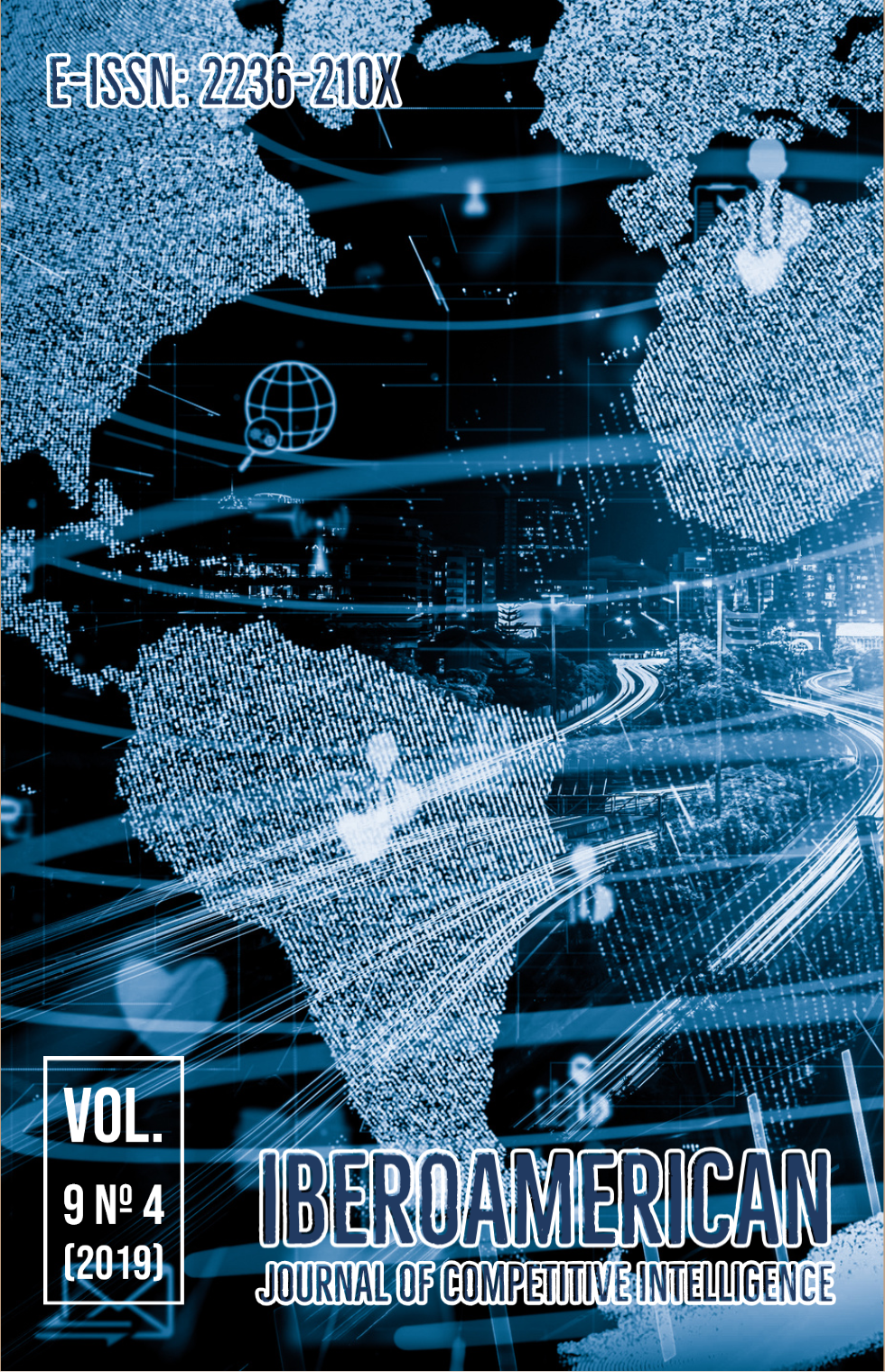Abstract
Pensando na competitividade organizacional de micro e pequenas empresas de prestadores de serviços variados na região de Tupã e na relação dessa competitividade com a sua presença nas mídias sociais, que têm forte apelo para prospecção de clientes desse perfil, buscou-se identificar a viabilidade e a usabilidade de um sistema que denominamos de ISCA (Identificador de Serviços para Comunicação Assertiva) sintetizando quatro pilares-base da comunicação (mercado, marketing, mensagem e mídia). Na busca por aferir a viabilidade da estrutura e da aplicação da ferramenta ISCA, realizou-se uma pesquisa quantitativa por meio do envio de 60 formulários a prestadores de serviço de Tupã e região. Dentre estes, 10, que manifestaram interesse, foram escolhidos para testar e aplicar o sistema. No teste do sistema ISCA, os selecionados foram estudados pelos aplicadores, de forma a preencher a ferramenta e aplicando os resultados posteriormente, por meio de criações de artes gráficas, definições de como conversar com o cliente, entre outras coisas. Verificou-se que o retorno foi significativo, confirmando a viabilidade do sistema e possibilitando o aumento da competitividade de micro e pequenas empresas com baixo potencial de investimento em comunicação.
References
Alves, E. J.; Mañas, A. V. (2008). Estratégia por diferenciação: uma proposta de vantagem competitiva através do Composto de marketing e valor social. Revista Administração e Diálogo. v. 10, n. 1, p. 18-46
Ibge (2017). Trabalhadores Autônomos. Disponível em: <https://ww2.ibge.gov.br/home/>. Acesso em: 21.03.2019.
Kotler, P., Kartajaya, H., Setiwan, I. (2017). Marketing 4.0: do tradicional ao digital. Rio de Janeiro: Sextante.
Kotler, P., Keller, K. L. (2006) Administração de Marketing. 12 ed. São Paulo: Pearson.
Lemos, C. M. (2011). Marketing Digital como Ferramenta de Diferenciação: Um Estudo de Caso no Curso de Administração da FAVIP – Caruaru – PE. Caruaru: FAVIP, 2011.
Meirelles, D. S. (2006). O conceito de serviço. Brazilian Journal of Political Economy, 26(1), 119-136. https://dx.doi.org/10.1590/S0101-31572006000100007
Mesquita, R. (2017). Marketing de Conteúdo: Primeiros Passos. Rock Content. E-book.
Porter, M. Competitive Advantage: Creating and Sustaining Competitive Performance. New York: The Free Press, 1986.
Rez, R. (2016). Marketing de Conteúdo: a moeda do século XXI. 1 ed. São Paulo: DVS.
Saraiva, P. M. (2019). Marketing Digital: A Utilização Das Mídias Sociais Como Um Canal de Comunicação no Varejo de Moda de Barbalha-CE. Id on Line Rev. Mult. Psic., vol.13, n.44, p. 486- 507. ISSN: 1981-1179
Wandersman, A. (2015). E se você fosse uma marca? 1 ed. Rio de Janeiro: Alta Books.
Authors who publish with this journal agree to the following terms:
1. Authors who publish in this journal agree to the following terms: the author(s) authorize(s) the publication of the text in the journal;
2. The author(s) ensure(s) that the contribution is original and unpublished and that it is not in the process of evaluation by another journal;
3. The journal is not responsible for the views, ideas and concepts presented in articles, and these are the sole responsibility of the author(s);
4. The publishers reserve the right to make textual adjustments and adapt texts to meet with publication standards.
5. Authors retain copyright and grant the journal the right to first publication, with the work simultaneously licensed under the Creative Commons Atribuição NãoComercial 4.0 internacional, which allows the work to be shared with recognized authorship and initial publication in this journal.
6. Authors are allowed to assume additional contracts separately, for non-exclusive distribution of the version of the work published in this journal (e.g. publish in institutional repository or as a book chapter), with recognition of authorship and initial publication in this journal.
7. Authors are allowed and are encouraged to publish and distribute their work online (e.g. in institutional repositories or on a personal web page) at any point before or during the editorial process, as this can generate positive effects, as well as increase the impact and citations of the published work (see the effect of Free Access) at http://opcit.eprints.org/oacitation-biblio.html
• 8. Authors are able to use ORCID is a system of identification for authors. An ORCID identifier is unique to an individual and acts as a persistent digital identifier to ensure that authors (particularly those with relatively common names) can be distinguished and their work properly attributed.





